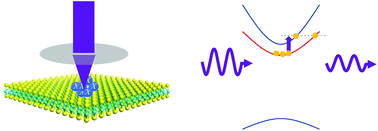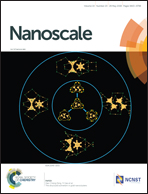Probing excitons in transition metal dichalcogenides by Drude-like exciton intraband absorption†
Abstract
Understanding excitonic dynamics in two-dimensional semiconducting transition metal dichalcogenides is important for developing their optoelectronic applications. Recently, transient absorption techniques based on resonant excitonic absorption have been used to study various aspects of excitonic dynamics in these materials. The transient absorption in such measurements originates from phase-space state filling, bandgap renormalization, or screening effects. Here we report a new method to probe excitonic dynamics based on exciton intraband absorption. In this Drude-like process, probe photons are absorbed by excitons in their intraband excitation to higher energy states, causing a transient absorption signal. Although the magnitude of the transient absorption is lower than that of the resonant techniques, the new method is less restrictive on the selection of probe wavelength, has a larger linear range, and can provide complementary information on photocarrier dynamics. Using the WS2 monolayer and bulk samples as examples, we show that the new method can probe exciton–exciton annihilation at high densities and reveal exciton formation processes. We also found that the exciton intraband absorption cross section of the WS2 monolayer is on the order of 10−18 cm2.



 Please wait while we load your content...
Please wait while we load your content...